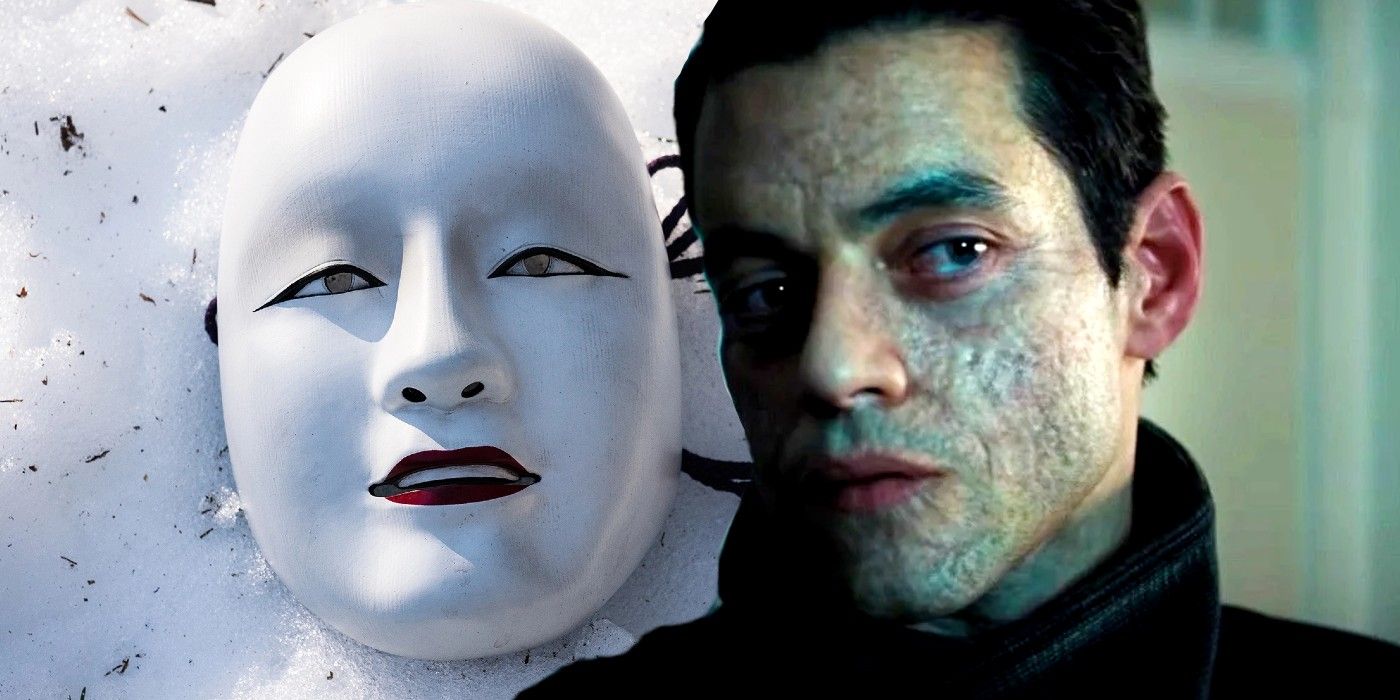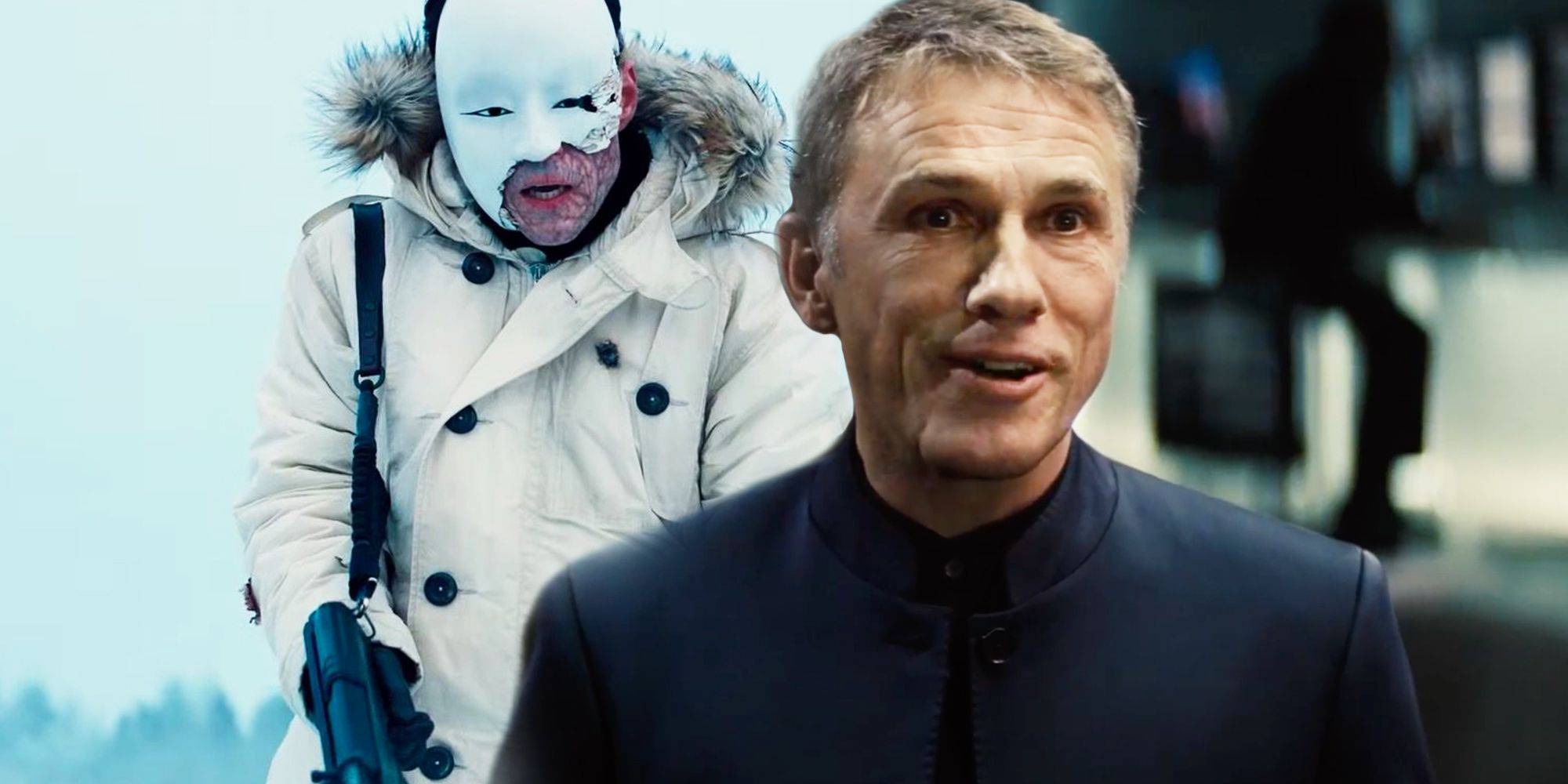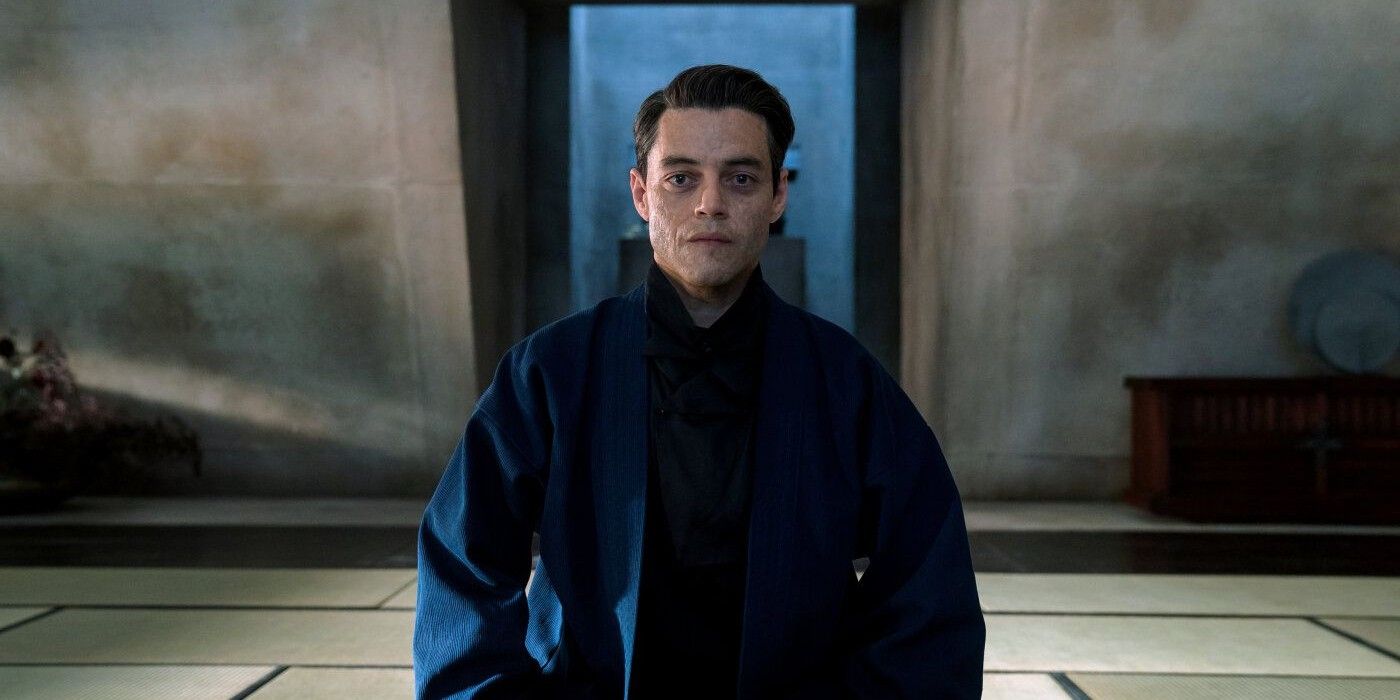
Warning: Major spoilers ahead for No Time To Die
Several key elements of Safin’s plan in No Time To Die simply don’t make sense without the presence of the previous major Bond villain, Ernst Stavro Blofeld. Although Blofeld does feature prominently in the narrative, it’s clear that he is playing second fiddle to Rami Malek’s Lyutsifer Safin. However, as a result of this reduced role, the film as a whole suffers and, ultimately, raises serious questions about the efficacy of Safin’s supposed master plan.
After occupying center stage in 2015’s Spectre, No Time To Die sees Blofeld very much behind the scenes in a British prison. Although he is still running operations at the criminal organization, courtesy of a computerized eye carried around by colleagues, his power and influence has been reduced as a result of his incarceration. This is made clear when an attempt to use stolen nanobots to kill James Bond at a Spectre party inadvertently results in the death of Spectre’s entire leadership. It later becomes clear that Safin is behind the mix-up as part of his plan to exact revenge on Spectre for the death of his family. Eventually, Safin manages to successfully assassinate Blofeld via James Bond, after Madeleine Swann infects him with nanobots programmed to match Blofeld’s DNA.
After executing his convoluted plan to kill Blofeld, Safin then focuses on finding a buyer for his stolen nanobot technology. This brings him into further conflict with Bond, who recognizes the potentially devastating impact of the so-called Heracles project. However, while programmable nanobots with the potential to kill anyone they come into contact with in seconds are undoubtedly scary, under closer inspection, the rationale for Safin’s supposed masterplan doesn’t hold up. Not only is it unclear why he hopes to eradicate so many people, but also what motivates him once he successfully kills the head of Spectre. Here’s why, ultimately, Safin’s plan in No Time To Die needed Blofeld to stand up to scrutiny.

Initially, Safin’s plan to kill Spectre as an act of revenge makes a certain amount of narrative sense. After all, avenging the deaths of your family is a perfectly compelling reason to seek potentially world-ending technology. However, not only does the continuation of his plan make little emotional sense after he has succeeded in his earlier goal, but the coherence of the entire project quickly falls apart after even a minimal amount of examination.
For example, it seems highly unlikely that an individual such as Safin, no matter what his resources or his level of influence, would be able to match the tools of a global criminal enterprise such as Spectre. After all, throughout the early story arc of the Craig era, Spectre was responsible for pulling the strings behind everyone from Le Chiffre to Raoul Silva – highlighting the extent of its power. The idea that a hitherto unknown villain with a mysterious backstory would be able to defeat the entire organization singlehandedly by persuading a single scientist to switch sides, therefore, seems extremely unlikely.
What’s even more unusual is that Blofeld and Spectre, despite the clear and present danger that he poses to them, seem largely unaware of Safin’s true motivations. Despite working for Spectre as an assassin, Safin’s revenge plot seems to take everybody by surprise. The idea that such an individual would be able to operate in the criminal underworld, amassing the resources to build his own poison base, without Spectre discovering his real plan and the potential threat he poses to the entire operation seems to stretch credulity to the limit.

Given the fact that Safin is both a new character to the franchise and seemingly lacks strong motivation once his revenge mission is completed, it seems that he may have worked more effectively as a supporting henchman, rather than a central villain. For instance, the idea of Spectre’s chief poisoner on the trail of James Bond at the behest of an incarcerated Blofeld may have helped the audience to overlook the obvious problems with incentive that emerge during the film’s second and third acts. This would have placed Safin alongside the likes of Jaws, Oddjob and Red Grant as iconic Spectre associates, rather than saddling him with the undue burden of carrying the whole movie.
As it is, the film arguably begins to fall flat once the shadow of Spectre, which had previously defined so much of the Daniel Craig Bond era, completely disappears from the scene. Although Safin’s desire for revenge offers an interesting shade to his character, his early success actually undermines the groundwork laid for the organization by previous movies. As a result, turning Safin into a henchman would have been an effective way for No Time To Die to underscore the danger posed by Spectre, rather than reducing them to a sideshow easily eliminated by a single defecting scientist.

By contrast, an alternative plot in which Blofeld was the real mastermind behind the nanobot plot would not only have served Safin’s character better, but would have been a far more compelling way to bring the entire Craig-era story arc to a close. Given the conflict between the two characters in previous movies, No Time To Die could have provided greater scope for exploring this compelling relationship. It’s easy to imagine, for instance, an alternative story arc in which Blofeld – with Safin’s help – attempts to exact revenge on James Bond from prison, perhaps with equally tragic results. This would have built on existing emotional tensions from the rest of the saga, rather than shoehorning in a new villain and starting again from scratch.
Placing Safin as a secondary villain would also have allowed the film to continue a trend that has defined Daniel Craig’s Bond movies – namely, defying convention and pushing boundaries. Throughout the Bond era, henchmen have typically been two-dimensional caricatures that, despite iconic characteristics, have lacked proper development. Placing an actor such as Malek in this role would have allowed the film to do something genuinely radical with its supporting baddie, giving him his own compelling motivations. Placing him in the heart of the action without a genuinely compelling story behind his actions ultimately satisfies no one and represents a serious mistake for No Time To Die.

One way in which the film could have incorporated both Safin and Blofeld would have been to alter Safin’s loyalties. It’s not inconceivable, for instance, that in a world where Blofeld is behind bars, a power struggle might break out at the top of the organization. In a bid to keep control of the group, Blofeld could therefore have recruited Safin to assassinate his rivals on his behalf.
Ironically, this approach may also have tied in with Safin’s plan for revenge. Given Blofeld’s age, it’s extremely unlikely that he would have been in charge of Spectre when Safin’s family were killed at the request of the group. However, other high-ups within the organization may well have had a hand in the murders, providing Safin a compelling reason to team up with Blofeld. In this world, Safin as the liberated expert poisoner could have operated on the outside with Blofeld still holding the reins of power in jail. This would have helped alleviate one of the central problems with No Time To Die by providing two villains with competing and equally compelling motives, while also giving a villain as iconic as Blofeld his due.
There’s no doubt that aspects of the movie provide a fitting swansong for Daniel Craig’s time as James Bond. However, for all of the exciting onscreen action, including Bond’s heartbreaking final sacrifice, it’s undeniable that Bond’s adversaries often fail to live up the rest of the film. With a few tweaks to the story, it’s easy to see how this problem could have been avoided. As it is, No Time To Die represents a missed opportunity – both for Rami Malek’s Safin and the re-imagined Ernst Stavro Blofeld.
